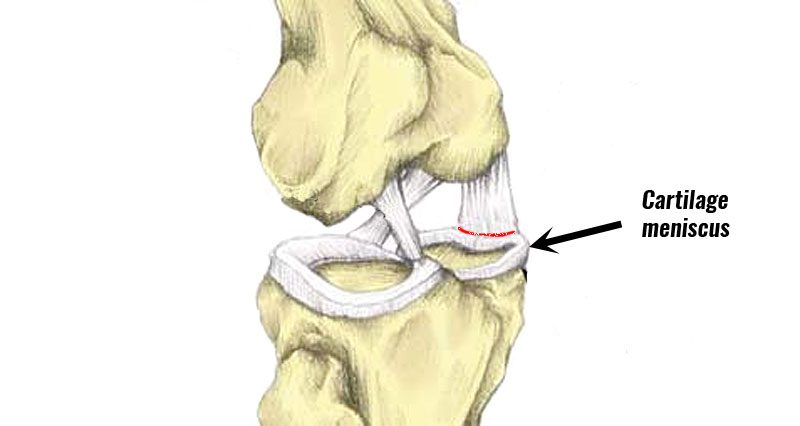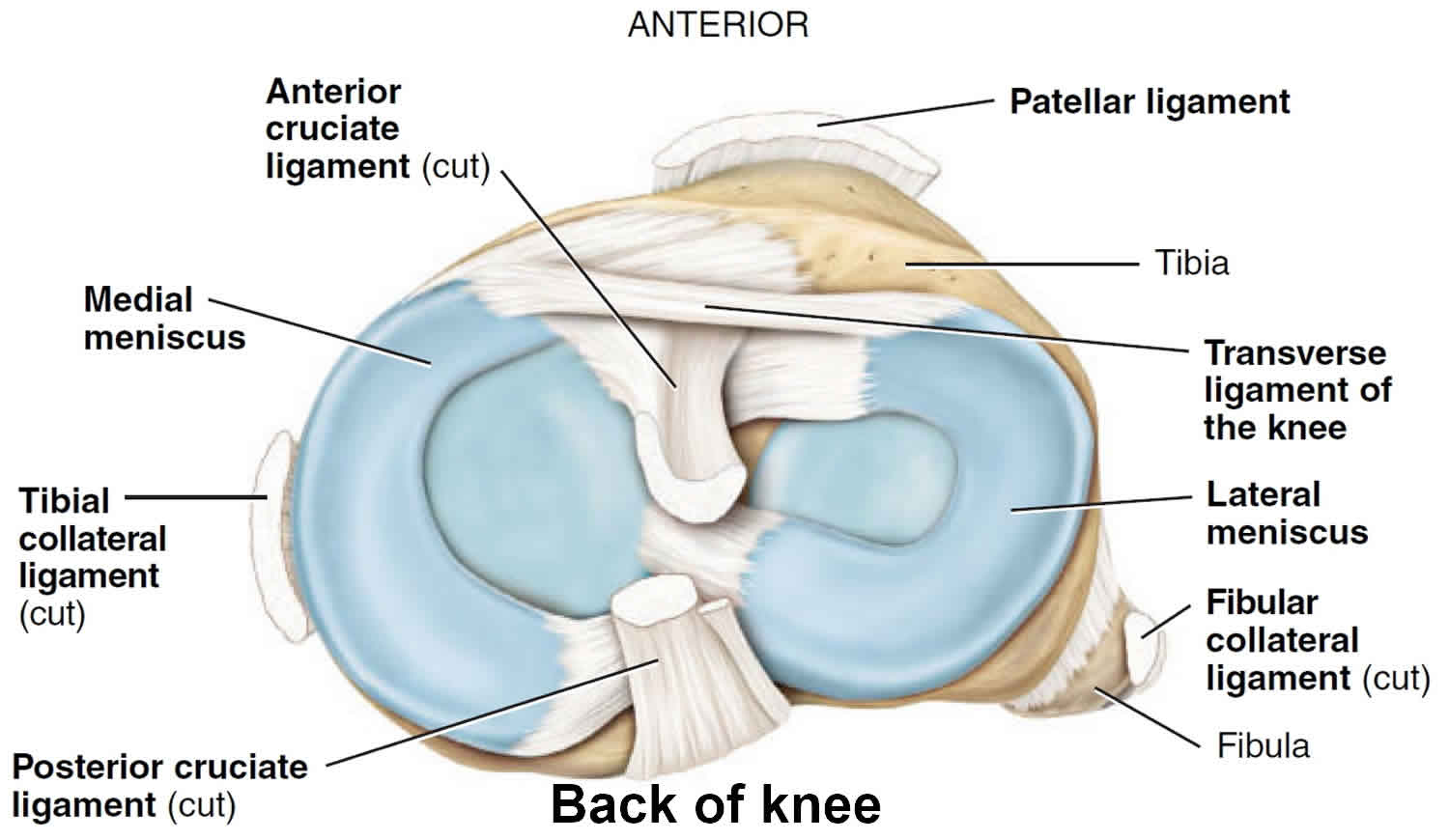Anatomy and Function of the Meniscus

Imagine your knee joint as a complex machine, and the meniscus is a vital component that ensures its smooth operation. These C-shaped pieces of cartilage act like shock absorbers and stabilizers, keeping your knee healthy and functional.
Structure and Location
The meniscus is made of tough, rubbery cartilage that sits on top of the tibia (shinbone), nestled between the femur (thighbone) and the tibia. There are two menisci in each knee: the medial meniscus, located on the inner side of the knee, and the lateral meniscus, situated on the outer side. These crescent-shaped structures are thicker on their outer edges and taper towards their inner edges, forming a wedge-like shape.
Roles of the Menisci
The menisci play crucial roles in maintaining knee joint health and function:
- Shock Absorption: They act as cushions, distributing weight evenly across the joint surface, protecting the cartilage from wear and tear.
- Joint Stability: The menisci help stabilize the knee joint by deepening the socket that the femur fits into, preventing the femur from sliding off the tibia during movement.
- Weight Distribution: The menisci distribute the weight of the body across the joint surface, reducing stress on the cartilage and preventing uneven wear.
Blood Supply and Healing
The blood supply to the meniscus is limited, particularly in the inner portion, which is known as the “avascular zone.” The outer portion, called the “vascular zone,” receives a limited blood supply. This limited blood supply has significant implications for healing:
- Slow Healing: Tears in the avascular zone often heal poorly due to the lack of blood supply, making surgical intervention necessary in many cases.
- Potential for Degeneration: Tears in the meniscus can lead to further degeneration of the cartilage, increasing the risk of osteoarthritis.
Types and Causes of Meniscus Tears

The meniscus, a C-shaped piece of cartilage in the knee, acts as a shock absorber and helps to distribute weight evenly. When this cartilage tears, it can cause pain, swelling, and difficulty moving the knee. There are several types of meniscus tears, each with its own unique characteristics and causes.
Types of Meniscus Tears
The type of meniscus tear depends on the location, shape, and severity of the tear. Here are some common types:
- Horizontal Tear: This type of tear occurs horizontally across the meniscus, like a slice of bread.
- Vertical Tear: This tear extends vertically through the meniscus, similar to a cut.
- Radial Tear: This type of tear is a vertical tear that extends from the outer edge of the meniscus towards the center.
- Flap Tear: A flap tear occurs when a piece of the meniscus is torn away from the main body of the cartilage, creating a flap.
- Bucket Handle Tear: This is a serious type of tear where a large portion of the meniscus is torn, resembling a bucket handle.
Causes of Meniscus Tears
Meniscus tears are often caused by injuries, but they can also occur due to age-related wear and tear.
- Sports Injuries: Many sports activities, particularly those involving twisting, pivoting, or sudden changes in direction, can lead to meniscus tears. For example, basketball, football, soccer, and skiing are common culprits.
- Degenerative Changes: As we age, the meniscus can naturally wear down and become more susceptible to tears. This is especially true for individuals who are overweight or have a history of knee injuries.
- Trauma: A direct blow to the knee, such as a car accident or a fall, can cause a meniscus tear.
Examples of Activities Leading to Meniscus Tears
- Twisting or Pivoting: A sudden twisting or pivoting motion, such as while playing basketball or soccer, can put stress on the meniscus, leading to a tear.
- Direct Impact: A direct blow to the knee, like getting hit during a football game or falling down stairs, can cause a meniscus tear.
- Squatting or Kneeling: Repeated squatting or kneeling, such as during gardening or construction work, can also contribute to meniscus tears over time.
Symptoms and Diagnosis of Meniscus Tears

A meniscus tear can cause a range of symptoms, from mild discomfort to severe pain and disability. The severity of symptoms often depends on the size and location of the tear.
Common Symptoms
Knowing the common symptoms of a meniscus tear can help you determine if you need to see a doctor. These symptoms often occur during or after an injury to the knee.
- Pain: Pain is the most common symptom of a meniscus tear. It may be sharp and sudden, or dull and aching. The pain may be worse when you bend or straighten your knee, or when you put weight on it.
- Swelling: Swelling around the knee is another common symptom. It may occur immediately after the injury, or it may develop gradually over a few days.
- Locking: A meniscus tear can cause your knee to lock, making it difficult or impossible to straighten your leg. This is often due to a piece of torn meniscus getting stuck between the bones of the knee joint.
- Clicking or Popping: You may hear a clicking or popping sound in your knee when you move it. This is often caused by a piece of torn meniscus moving around in the joint.
- Stiffness: You may experience stiffness in your knee, especially after periods of rest or inactivity.
- Giving Way: Your knee may feel unstable or give way, especially when you try to put weight on it or change directions quickly.
Physical Examination
Your doctor will start by asking about your symptoms and medical history. They will then perform a physical exam to assess your knee’s range of motion, stability, and tenderness.
- Range of Motion: The doctor will check how far you can bend and straighten your knee.
- Stability: The doctor will test the stability of your knee by moving it in different directions.
- Tenderness: The doctor will feel around your knee to check for areas of tenderness.
Imaging Tests
If your doctor suspects a meniscus tear, they may order imaging tests to confirm the diagnosis.
- X-ray: An X-ray can rule out other causes of knee pain, such as fractures or arthritis. It may also show signs of a meniscus tear, but it is not always reliable for diagnosing meniscus tears.
- MRI: An MRI is the best imaging test for diagnosing meniscus tears. It provides detailed images of the soft tissues in your knee, including the meniscus.
Arthroscopy
In some cases, your doctor may recommend an arthroscopy to confirm the diagnosis of a meniscus tear. Arthroscopy is a minimally invasive surgical procedure that allows the doctor to view the inside of your knee joint using a small camera. This procedure can also be used to repair or remove a torn meniscus.
- Diagnostic Arthroscopy: This procedure is performed to confirm the diagnosis of a meniscus tear and to determine the severity of the tear.
- Therapeutic Arthroscopy: This procedure is performed to repair or remove a torn meniscus.
Differentiating from Other Knee Injuries
It’s crucial to differentiate a meniscus tear from other knee injuries, as the treatment approach varies.
- Ligament Injuries: Ligament injuries often cause more instability in the knee than meniscus tears. The doctor will assess the stability of your knee to determine if a ligament injury is present.
- Arthritis: Arthritis can cause pain, swelling, and stiffness in the knee. The doctor will check for signs of arthritis, such as joint space narrowing and bone spurs.
- Tendonitis: Tendonitis can cause pain and tenderness around the knee. The doctor will check for tenderness over the tendons that surround the knee joint.
A meniscus tear is a common injury that occurs when the cartilage in the knee is torn. This can happen due to a sudden twisting motion or a direct blow to the knee. A notable example of a meniscus tear impacting a high-profile athlete is jj mccarthy knee surgery , which unfortunately sidelined the Michigan football player.
Meniscus tears can be treated with surgery, physical therapy, or a combination of both. The treatment plan depends on the severity of the tear and the individual’s activity level.
A meniscus tear is a common knee injury that occurs when the cartilage in the knee is torn. This can happen due to a sudden twisting motion or a direct impact. The severity of a meniscus tear can vary, ranging from a small tear to a complete tear.
The impact of such an injury can be significant, as seen in the recent justin jefferson injury , where the wide receiver suffered a meniscus tear, impacting his performance and the Vikings’ offensive strategy. Treatment for a meniscus tear depends on the severity and can range from physical therapy to surgery.
